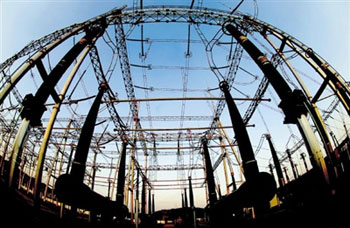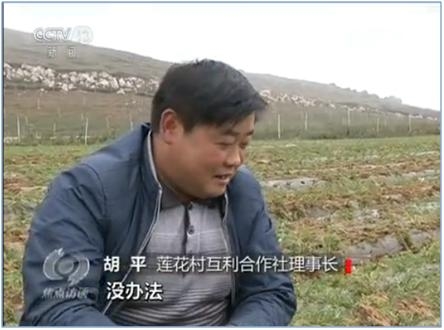How to operate the prices of major agricultural products in 2016
According to the discussion of the agricultural whole-industry chain analysis and early warning team of the Ministry of Agriculture, due to the impact of high agricultural production, increased imports, weak demand and falling international prices in 2015, the market prices of agricultural products in China have generally fallen, and farmers in the main producing areas have lost a lot of income.
Looking forward to 2016, the adjustment of agricultural structure, the destocking of bulk products, changes in consumer demand and changes in international prices will be important factors that dominate the operation of China's agricultural products market.
The just-concluded Central Rural work Conference and the National Agricultural work Conference proposed that efforts should be made to strengthen the supply-side structural reform of agriculture and promote the restructuring of planting, animal husbandry, and fishery. The trial of fallow and rotation will be carried out gradually in 2016, the area of corn will be reduced by more than 10 million mu, the planting area of cotton in the Yellow River and Yangtze River basins may continue to decline, the enthusiasm of rape growers in the main producing areas will be frustrated, and the area of rape planted in autumn and winter will be reduced by more than 20%.
We will strengthen agricultural supply-side reform, with emphasis on removing stocks of agricultural products, reducing costs, and making up for deficiencies. At a time when the stocks of grain, cotton, oil, sugar and other staple agricultural products are generally high, speeding up the digestion of stocks will increase the effective supply of agricultural products in the market, especially on grain, cotton and oilseeds.
From the demand side, the total consumption of agricultural products processing is expected to remain basically stable, the consumption structure will accelerate upgrading, with the rapid development of e-commerce, the consumer demand for high-quality, special-purpose and branded agricultural products continues to grow. World grain production remains at an all-time high, and the United Nations Food and Agriculture Organization (FAO), the United States Department of Agriculture and other agencies have predicted that international food prices will continue to fall in 2016. It is expected that the domestic and foreign prices of agricultural products will continue to hang upside down, and agricultural products, especially livestock products, will remain high driven by price differentials. However, with the decline in corn prices, the import scale of corn substitutes such as sorghum and barley, which have increased significantly in the past two years, is expected to gradually decline.
Considering the factors of production, inventory, consumption and import, it is expected that the prices of major agricultural products will continue to be weak in 2016, and the risk of unsalable and difficult selling of some agricultural products will increase.
Three major cereals: downward pressure on market prices
Wheat production and demand is expected to be basically balanced. In 2016, the minimum purchase price of wheat remains the same as that of the previous year, the sown area of winter wheat is stable, the seedling condition is better, and the feed demand is at a low ebb. It is expected that the price will fluctuate slightly around the lowest purchase price, and the price trend of common wheat will continue to be weaker than that of high-quality wheat.
The supply and demand of rice is relatively loose. The minimum purchase price of rice in 2016 is expected to be basically stable. With the acceleration of rice destocking in major producing countries such as Thailand, the growth of consumption rigidity and the slight depreciation of the RMB, the pressure on imports driven by price differences at home and abroad is expected to ease. It is expected that the downward pressure on low-end rice prices will be great, and the prices of high-quality rice will be stable.
With the high level of corn inventory, destocking will lead to a phased relaxation of market supply. With the gradual decline of market prices, processing demand is expected to restore growth, while the price advantage of imported sorghum and barley weakens, and the import of substitutes is expected to decrease. In addition, domestic production has entered an active reduction cycle, corn market prices are expected to stabilize first and then fall in 2016, and gradually stabilize in the decline.
Livestock and poultry products: prices are expected to rise steadily and slightly
Affected by the sharp decline in the stock of energy breeding sows compared with the same period last year, pig supply and demand in the first half of 2016 will continue to be the tight balance since the second half of 2015. Prices are expected to rise slightly, and pig prices may rise slightly in the first quarter driven by the peak consumption season. With the improvement of farming efficiency, pig stocks continue to resume growth, coupled with the possibility of further increase in imports, pork market supply is adequate, if there is no major epidemic, pig prices will not increase too much for the whole year.
Affected by bird flu in the United States and China's ban on the import of US poultry products, poultry products are expected to increase slightly in 2016. Driven by urbanization and the consumption of the "comprehensive two-child" policy, the price of poultry eggs is expected to rise steadily.
The recovery of dairy consumption and the recovery of international prices will support a steady rise in domestic raw milk prices.
The tight pattern of beef supply and demand will continue, and prices will run high. The production of mutton sheep continues to grow, and the price of mutton sheep in the main producing areas may continue to decline due to the impact of imports and the decline in consumption.
Domestic demand for aquatic products is stable, external demand is sluggish, and prices are expected to be basically stable.
Cotton, oil and sugar: weak fluctuations in domestic and international prices
According to the latest forecast of the International Cotton Advisory Committee (ICAC) in November 2015, global cotton production is 23.92 million tons and consumption is 25.05 million tons in 2015. With the exception of China, the ratio of inventory to consumption is 52%, and the supply and demand situation is still loose. Domestic cotton demand has not improved significantly, and cotton prices are expected to remain low under high inventory pressure. Due to the significant decline in cotton area and total production in 2015, the cotton area in the mainland continues to shrink, the speed of cotton destocking is expected to accelerate, and there is little room for cotton prices to continue to fall sharply.
According to the latest forecast of the International Sugar Industry Organization (ISO), the global sugar production in the 16th pressing season in 2015 will end its production exceeding demand for 5 consecutive years, and it will require 3.5 million tons of insufficient production, which is conducive to the long-term stabilization and recovery of sugar prices. It is estimated that during the 2015-2016 crushing season, China's sugar production will drop to about 10 million tons, sugar consumption will increase to about 15.5 million tons, and the gap between sugar production and demand will widen. However, due to the high level of inventory and the large price gap at home and abroad, China's sugar market will still exceed demand in the short term, and the market operation is still fragile.
In 2016, the global supply of soybeans and rapeseed is still very sufficient, and the level of domestic edible oil stocks remains high. It is expected that oil and oil prices will continue to follow the international market to maintain a weak and volatile pattern. As imports continue to increase and domestic oilseed production continues to decline, the self-sufficiency rate of edible oil may fall to about 25% in 2016.
Vegetables and fruits: seasonal fluctuations in prices
The planting area of vegetables across the country is expected to be relatively stable and the market supply is adequate. Affected by the rigid increase in planting costs, vegetable prices are expected to rise steadily and slightly.
In 2015, China's fruit continued to increase production, especially apples and bananas increased more, and the supply of fruit market was loose in the later period. Coupled with the significant increase in fresh fruit imports and the sharp expansion of the trade deficit, it is expected that fruit prices are generally weak in 2016, so it is necessary to guard against the risk of some varieties being unsalable and difficult to sell.
- Prev

China's rural power and power strive to cover all over the country in five years.
China's rural power and power strive to cover all over the country in five years.
- Next

The myth of Maka is shattered, and the place of origin is worse than the price of radish!
The myth of Maka is shattered, and the place of origin is worse than the price of radish!
Related
- A course of planting techniques and methods on how to grow carrots
- How to plant the latest tulips?
- Is it better to pick tea in the morning or in the afternoon? When is the best time for tea to be picked? what is the third or fifth tea?
- Launch Yuanxiao Happy combination Haocha + Tea Yuan healthy Taste
- Penghu Tourism "Fireworks 20 Parade with You"
- 2022 West Lake Happiness holds "Digital Revitalization Voucher" and draws iphone13 and laptop.
- Banqiao Fuzhou social houses are designed to change start-up combined with police elimination to create a safe and livable environment
- The convenient measure of "mechanical weeding" in Xinbei has been abused and the Agriculture Bureau has imposed heavy penalties on the illegal land consolidation.
- Changgeng University Joins Hands with Four Memory Factories to Rescue Memory Talent Shortage
- The list of Taiwan's top 100 MVP managers is listed by the Director-General of the Farmers' Association of Sanxia District.

